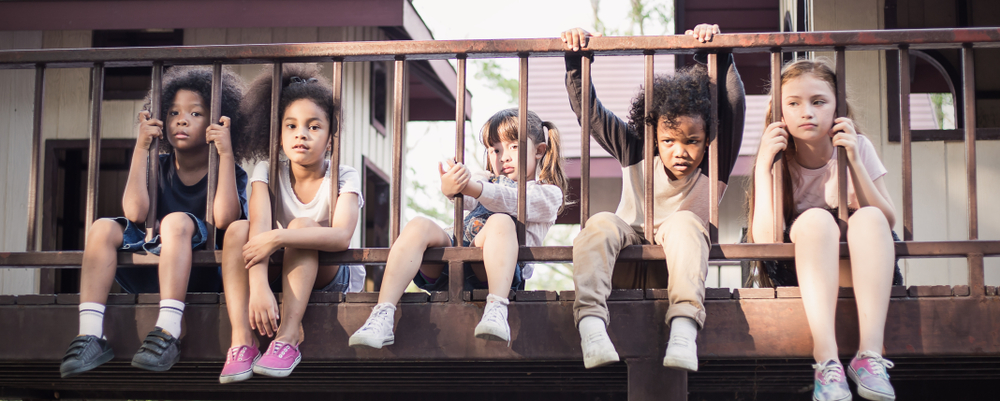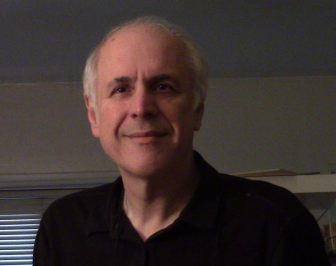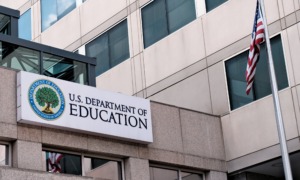
paulaphoto/Shutterstock
.
When she first learned that journalist and Black Lives Matter activist Shaun King and his family were being harassed by a troll who had called in a false report of child abuse, Alexandria Ocasio-Cortez was outraged. She is the activist and champion of the poor and working class who was catapulted to national prominence when she won an upset victory in a Democratic congressional primary in New York City.
But even with all her experience as a progressive organizer and activist, she was shocked by how child protective services agencies work.
“This is wrong,” she tweeted. “Shaun is an activist that has been targeted in the past. Anonymous claims should be thoroughly vetted before exposing his children + family to a potentially damaging experience.”

Richard Wexler
And then she added a question: “What’s going on here?”
What’s going on here? Business as usual, that’s what’s going on here. The only part that’s unusual is that this is one of those rare occasions when child protective services targeted a family with the resources to fight back (not to mention more than one million followers on Twitter).
I don’t blame Ocasio-Cortez for not knowing. The child protective services system is more secret than the CIA. Unlike the police, abuses by CPS, especially its abuses of poor people and people of color, get very little attention. On the contrary, almost the only time the system gets attention — because it’s one of the few things it can’t hide — is when a child “known-to-the-system” dies. That leaves the false impression that this is the only kind of error child protective services makes.
So we get a system that harasses millions of families with false reports every year — doing enormous harm to children in the process.
Compounding the problem, many in the progressive community who rally around the issue of abuse by police stand silent when the abuse is committed by child protective services — or worse, encourage such abuses and oppose efforts to curb them with minimal due process protections.
None of it does anything to actually protect children. More than four out of five reports investigated by child protective services agencies are false. And all that time wasted on false reports is stolen from finding children in real danger.
How CPS investigation process works
So let me try to explain what is, in fact, going on here.
In Shaun King’s case, an anonymous caller, as King put it, “weaponized” child protective services against his family. The caller made allegations that are obviously absurd, as King has shown in a series of tweets, an essay by his wife, Rai King, and in this video.
As Ocasio-Cortez points out, King has been targeted for harassment in all sorts of ways in the past. That should have made it even clearer that these allegations had no merit.
And then there was the fact that the allegation was anonymous. Such allegations are, by far, the least reliable. In Pennsylvania, for example, in 2014 only 2 percent of such reports were “substantiated” — and typically “substantiated” means only that a caseworker thought it was at least slightly more likely than not that abuse or neglect occurred. Even in states that have penalties for malicious false reports, as long as the caller is anonymous s/he’s unlikely to be caught.
So, at a minimum, just as Ocasio-Cortez says, “Anonymous claims should be thoroughly vetted …”
But not only does this not happen, under New York state regulations it can’t happen.
These regulations make screening out malicious false reports almost impossible: If the allegations made by the caller, if true, would meet the broad, vague definitions of child abuse or neglect in state law, then the call must be “screened in” and passed on to the local child protective services agency for investigation.
Once that happens, the local agency, in this case, New York City’s Administration for Children’s Services, has no choice. They must send out a caseworker. (But ACS has considerable discretion concerning how intrusive the investigation is.)
A right to refuse — if you’re middle class
So, sure enough, the worker shows up — but is intercepted by the doorman. Needless to say, ACS workers are almost never sent to buildings with doormen. The worker demands to interview King’s children away from him and his wife. He demands to speak to the worker’s supervisor — who threatens to send the police if King refuses the demand. But King exercises his right to refuse.
Yes, this right to refuse exists — in theory. As a practical matter, it exists only for the middle class.
That’s because the caseworker can decide that the very act of exercising this right supposedly makes the case an “emergency” — and remove the children on the spot, entirely on her own authority. Nearly half of all child protective removals of children in New York City take place without getting a court’s permission first. Even if the worker doesn’t actually plan to do it, just the threat to take the child and run can be enough to scare someone who has no access to a lawyer.
So let’s be clear: Were Shaun and Rai King living below the poverty line in the South Bronx, chances are their children would be in foster care right now.
Instead, he can fight back. He immediately sought legal assistance. (Right now, he’s being represented by the Family Defense Clinic at New York University School of Law. The co-director of that clinic, professor Martin Guggenheim, also is the president of the National Coalition for Child Protection Reform.) And both King and his wife have made clear they understand that poor people face much greater obstacles.
The children almost certainly won’t be placed in foster care, and there’s a good chance they won’t be subjected to the kinds of traumatic interrogations and strip searches that are common in these investigations.
It can happen over and over
But even under the best of circumstances, even if ACS quickly realizes they are aiding and abetting harassment and they drop the case, the ordeal isn’t necessarily over.
Because the same troll, or another one, can simply make another anonymous report to the hotline and the family will be put through the whole ordeal again. Once again, the hotline won’t assess the credibility of the report — no one will say: “It’s obvious this family is being harassed so we’ll screen this call out.” And ACS can’t say, “Oh, they’re harassing the Kings again, so we won’t be a party to it.” Instead, they have to send out a caseworker all over again. And if the troll calls in over and over and over, the process will repeat over and over and over.
In fact, it gets even worse.
In the normal world, repeated false claims about someone would suggest harassment, and future reports would have less credibility. But in the bizarro world of child welfare, repeated false reports give the case more credibility. That’s why false reports, no matter how ridiculous, are kept in child welfare agency files sometimes for a decade or more. Indeed, that Keystone Kops of Commissions, the so-called Commission to Eliminate Child Abuse and Neglect Fatalities has recommended that hotlines not screen out any repeat call about a family (Attention, trolls: Call early and often) or any call about a child under age 3. (Attention, trolls: If your target has young children, you’re in luck!)
In Pittsburgh, priorities for which cases to investigate effectively are set by a computer algorithm. This kind of use of “predictive analytics” is the latest fad in child welfare.
The humans who created the algorithm decided it should consider the existence of previous reports among the strongest supposed predictors of future danger to a child. So they created an algorithm that doesn’t care if the previous reports were false or even if they were malicious. The algorithm just adds up the number of reports and raises the “risk score” accordingly. (Attention, trolls: If you’re really lucky, your target lives in Pittsburgh.)
Make every child safer: Replace anonymous reporting with confidential reporting
It doesn’t have to be this way, of course. For starters, states could ban anonymous reporting (or Congress could condition receipt of various forms of federal aid on states enacting such bans).
The objection, of course, is that this would make some people afraid to report. But banning anonymous reporting does not mean that the accused would know the accuser’s name. Anonymous reporting could be replaced by confidential reporting. The accused still would not know who made the accusation — unless a judge found that it was an act of deliberate harassment — but the hotline would have to have the name of the caller and verifiable contact information before screening in the report. That would help discourage the trolls.
In addition, hotlines and child protective services agencies should be given the right to engage in substantive screening of reports. Hotlines should be allowed to assess their credibility before forwarding them to child protective services agencies and the agencies should be allowed to assess credibility before sending out caseworkers.
The reason agencies and many politicians resist this, of course, is the usual: We’re just “erring on the side of the child,” they say. (It’s the same justification the Trump administration is using to delay reuniting the families it separated at the Mexican border, by the way.) They argue that if they don’t allow anonymous reports a child in real danger might be missed.
Anonymous reporting endangers all children
But we actually miss more children in real danger now.
One study estimates that one-third of American children — and a majority of African-American children — will be forced to endure at least one child abuse investigation. And more than 80 percent of the time, those investigations are for nothing; the reports are false. They don’t even meet the minimal standards for “substantiation” under state laws.
So in addition to traumatizing millions of children, caseworkers spend four-fifths of their time spinning their wheels. And that’s for all reports. Anonymous reports are vastly less reliable.
All that wasted time is being stolen from finding children in real danger.
There will always be screening in child welfare. The choice is between rational screening — by doing things like eliminating anonymous reporting — or irrational screening, in which workers are in such a rush to make decisions, because they’re so overloaded, that they wrongly label some children abused and wrongly ignore abuse in others.
Yes, if anonymous reporting is banned some children in real danger may be missed. But we miss far more children in real danger right now by overloading workers with vast numbers of false reports.
I don’t know if there are any politicians with the courage to demand an end to anonymous reporting, rational screening of calls to hotlines and other reforms that would bring a measure of basic due process to child welfare.
But at least there’s a candidate for Congress who’s asking the right questions.
Richard Wexler is executive director of the National Coalition for Child Protection Reform.





























